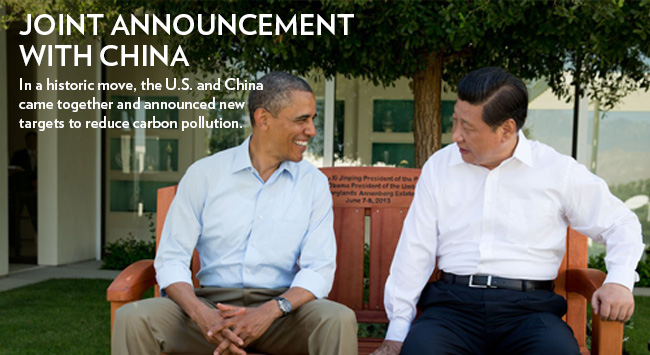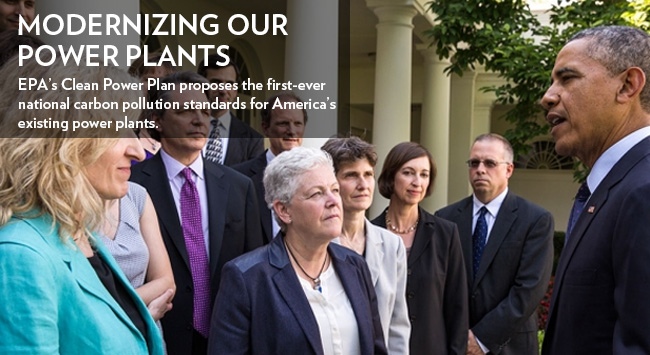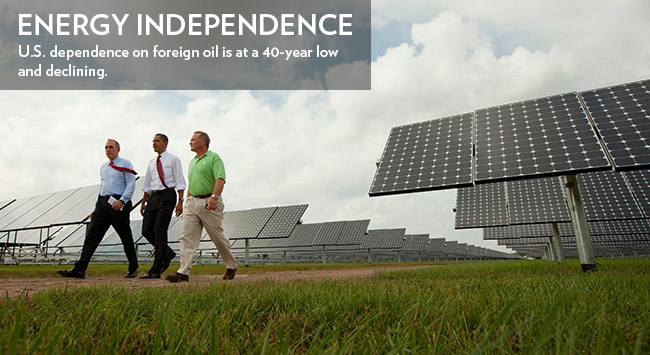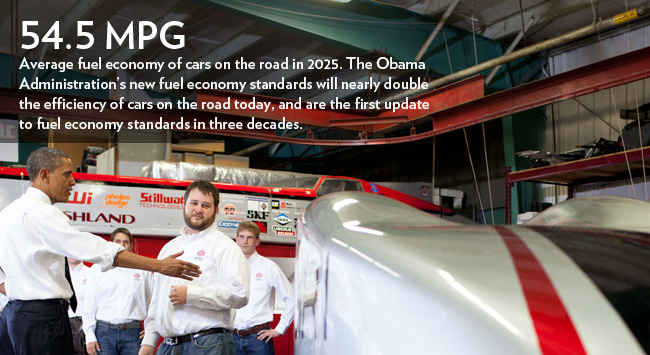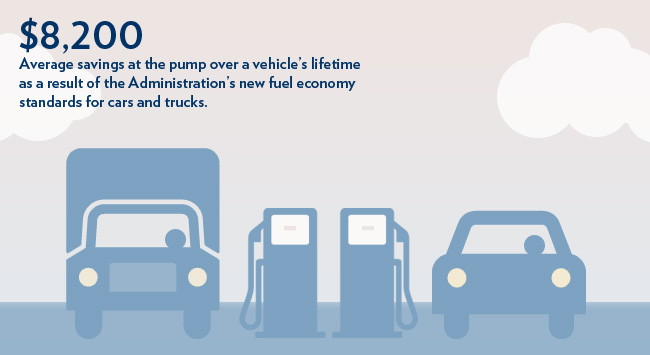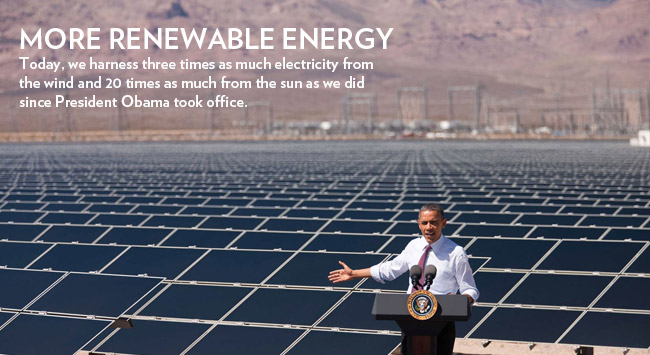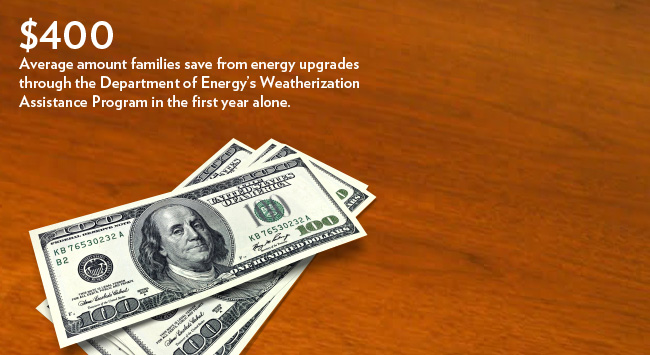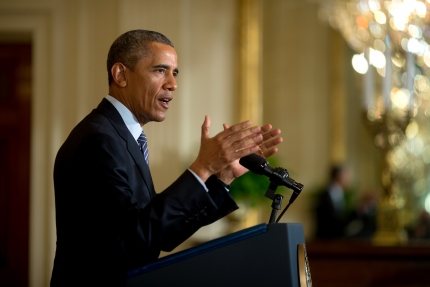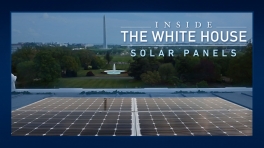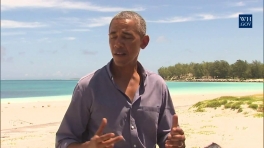Energy and Environment Latest News
Here’s What They're Saying About President Obama’s Clean Power Plan:
Posted by on August 3, 2015 at 7:15 PM EDTToday, President Obama announced the Administration’s biggest step yet in the fight against global climate change – the Clean Power Plan, which sets the first-ever carbon pollution standards for power plants.
There is consensus across a broad swath of supports – from business to mayors, medical professionals to faith leader, and environmentalists to civil rights groups, that this landmark action will protect public health, reduce energy bills for households and businesses, create American jobs, and bring clean power to communities across the country.
Below are just some of the reactions:
American Lung Association, Harold P. Wimmer, National President and CEO:
Today, President Obama honored his commitment to act on climate change, a public health emergency. The Clean Power Plan is a tremendous step forward in the United States’ fight against carbon pollution and climate change that will also bring immediate health benefits to the American people. EPA estimates that the Clean Power Plan will prevent up to 3,600 premature deaths and 90,000 asthma attacks in 2030, as well as prevent 300,000 missed days of work and school.
Learn more about Energy and EnvironmentThe Clean Power Plan: Myths and Facts
Posted by on August 3, 2015 at 1:56 PM EDTToday, as part of the President’s plan to cut carbon pollution, the Environmental Protection Agency (EPA) finalized the first-ever national limits on carbon pollution from existing power plants, the single-largest source of carbon pollution in the United States. The Clean Power Plan is an historic step in the fight against climate change. It sets flexible and achievable standards to reduce carbon dioxide emissions by 32 percent from 2005 levels by 2030, while creating tens of thousands of jobs.
But just because this common-sense proposal will have huge benefits for hard-working Americans across the country, doesn’t mean some people won’t spread misinformation and launch false attacks. There will be critics of what we’re trying to do, and cynics who say it can’t be done. Long before the details of this plan were even decided, the special interests and their allies in Congress were already mobilizing to oppose it with everything they’ve got. In fact, we are likely to see the same tired arguments naysayers raised last year — and in 1990, when the United States tackled acid rain; and in the 1970s, when the Clean Air Act was passed.
Before we get into the details, we want to remind everyone, throughout our history, when America has taken steps to cut pollution and protect public health, opponents have made dire predictions about destroying jobs and harming the economy — and throughout our history they've been wrong.
This time will be no different. As the polluting interests and their allies come up with new and creative myths, we’ll dispel them on Twitter at @Rohan44.
Myth: Carbon pollution standards will destroy jobs and hurt the economy.
Fact: Americans know we can cut pollution and protect the health of our kids while creating jobs.
Over the years, this has been the polluters' favorite myth. When Republican President Richard Nixon signed the Clean Air Act to combat smog, he talked about the promise of tackling pollution and our responsibility to future generations. Polluting interests and their allies said new pollution standards would decimate the auto industry. That was false. In 1990, when Republican President George H.W. Bush took steps to stop acid rain, polluting interests and their allies claimed the lights would go out and businesses around the country would suffer. That was false.
EPA has been protecting air quality for more than 40 years, and in that time we've cut pollution by 70 percent while the economy has more than tripled.
So Americans know we don't have to choose between cutting carbon pollution to protect the health of our kids and creating jobs.
In fact – they go hand in hand. Cutting carbon pollution from power plants will spark innovation and drive investment in clean energy technologies and energy efficiency that will create jobs and save families money. It will also result in significant health benefits, which will yield medical savings.
EPA’s detailed economic analysis shows that this proposal will create tens of thousands of jobs all over the country. And they aren’t the only ones. Two independent studies show even larger job gains of around 300,000 jobs when the Clean Power Plan is fully implemented. And if we look at carbon reduction programs that are already in place, we find that from 2014-2016, the Regional Green House Gas Initiative trading program, is expected to create 14,000 new jobs across nine states.
Learn more about Energy and EnvironmentWhat the Clean Power Plan Means For America
Posted by on August 3, 2015 at 9:35 AM EDTBREAKING: On Monday, President Obama will release the final version of America's Clean Power Plan—the biggest, most...
Posted by The White House on Saturday, August 1, 2015
On Monday, August 3, President Obama is announcing the finalization of America's Clean Power Plan, the biggest step we've ever taken to combat climate change. This plan sets the first-ever carbon pollution standards for power plants, while providing states and utilities with the flexibility they need to meet those standards.
Watch the President's remarks:
Learn more about Energy and EnvironmentClimate Change is a National Security Issue
Posted by on July 29, 2015 at 12:09 PM EDTIt was the afternoon of Saturday, April 24th, 2004, and as usual it was a breathtakingly hot day in the Northern Arabian Gulf—easily over 90 degrees. I was standing watch in the Combat Information Center onboard the USS BULKELEY (DDG-84), a U.S. Navy guided-missile destroyer, and we were steaming south on a new mission.
We had recently completed our weeks-long tasking of guarding the two offshore oil terminals that sit off the coast of Iraq. We knew these terminals were targets for insurgent attack, so it had been a stressful few weeks of round-the-clock operations, monitoring everything that moved on the water or in the skies; and intercepting anything that got a little too close for comfort.
As we sailed south, the call came we had all been dreading. The terminals were under attack. Although we had trained for it countless times, it was still surreal to hear it come across the radio. We turned the ship around and sped north at flank speed. We put the ship at high alert and launched our helicopters to take a first look, but it was too late. Terrorists had already launched an attack on the Al Basra terminal. In the end, the coalition forces on-site would foil their attack, but it ultimately cost the lives of two U.S. sailors and a Coastguardsmen.
I tell this story because at the heart of that fight was the issue of energy. Now, more than ever, the United States faces global challenges as we respond to threats born from instability in energy-rich regions, and a changing environment impacted by climate change.
Today, the Department of Defense is delivering a report to Congress entitled the “National Security Implications of Climate-Related Risks and a Changing Climate.” It states in no uncertain terms what our men and women in uniform are seeing every single day—that it “is clear that climate change is an urgent and growing threat to our national security.”
The report identifies the most serious and likely climate-related security risks and discusses the ways that DoD is navigating these risks as part of its planning processes. It also describes the resources that will be required to adequately and effectively respond to them.
The report builds upon the risks DoD identified in its 2014 Quadrennial Defense Review, when it made the following case: “the pressures caused by climate change will influence resource competition while placing additional burdens on economies, societies, and governance institutions around the world. These effects are threat multipliers that will aggravate stressors abroad such as poverty, environmental degradation, political instability, and social tensions – conditions that can enable terrorist activity and other forms of violence.”
The good news is, we are taking aggressive action to combat these threats. President Obama’s diversified energy strategy is making America more energy independent, and since the President took office, domestic energy-related emissions have fallen to their lowest level in 20 years. For the first time in nearly three decades, we're importing less foreign oil than we're producing domestically -- and we're using less overall. That's a really big deal.
America is producing more oil, gas, and renewable energy, and the U.S. is becoming more energy efficient overall. These trends are increasing our energy security, cutting our carbon pollution, and enhancing our economic growth.
The United States is leading global efforts to address the threat of climate change. Since 2005, the United States has reduced its total carbon pollution more than any other nation on Earth. Wind power has tripled, and solar energy has increased twenty times. President Obama has taken a series of common-sense steps to curb carbon pollution and other greenhouse gases through initiatives that drive energy efficiency, promote clean energy, and put in place the first-ever carbon pollution standards for power plants.
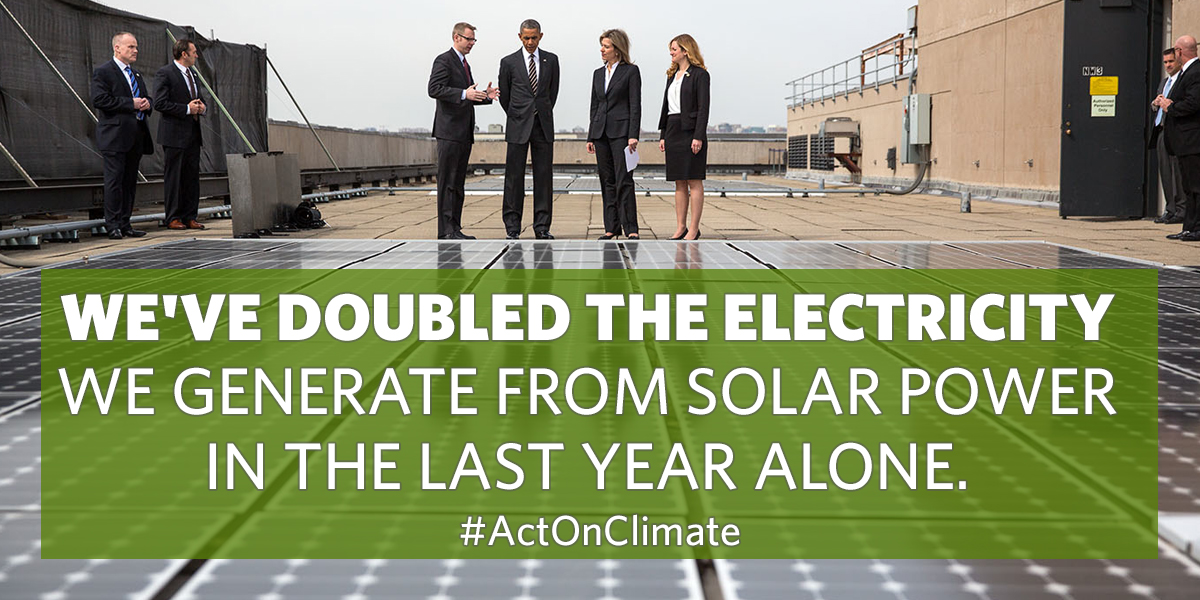
While we are leading in these efforts at home, we know no country is immune from the impacts of climate change. And no country can meet this challenge alone. America continues to lead the international community in driving action to reduce carbon pollution and prepare for climate impacts, and we are helping to forge a truly global solution to this global challenge.
My time in service in the US Navy, my time in service here at the White House, and my time as a father of two young girls reminds me constantly of President Obama’s challenge:
“Someday, our children, and our children’s children, will look at us in the eye and they’ll ask us, did we do all that we could when we had the chance to deal with this problem and leave them a cleaner, safe, more stable world?”
I want that answer to simply be yes.
Learn more about Energy and EnvironmentChampions of Change: People of Faith Acting on Climate
Posted by on July 22, 2015 at 11:31 AM EDTOn Monday, I was pleased to be able to welcome twelve people of faith as they were honored as White House “Champions of Change” for their efforts in protecting our environment and communities from the effects of climate change. These Champions have demonstrated clear leadership across the United States and around the world through their grassroots efforts to green their communities and educate others on the moral and social justice implications of climate change.

The Champions shared personal reflections on their efforts in advance of the event:
Learn more about Energy and EnvironmentCelebrating Five Years of the National Ocean Policy
Posted by on July 22, 2015 at 9:50 AM EDTIt’s an exciting summer for the ocean, and we’re not just talking about Shark Week. President Obama proclaimed June 2015 as National Oceans Month, and, in mid-June, Capitol Hill Ocean Week here in Washington, DC, featured a series of displays and symposia highlighting the multifaceted wonders of the ocean and the challenges of conserving and managing ocean resources.
This week marks the anniversary of a significant milestone in the journey to improve ocean governance in the United States: five years ago, on July 19, 2010, President Obama signed an Executive Order creating the first National Ocean Policy and a Federal interagency National Ocean Council (NOC), which we co-chair, to implement it.
To honor this anniversary, we offer some reflections here about the importance of the National Ocean Policy in helping the Nation meet its stewardship responsibilities for the oceans, coasts, and Great Lakes, and the work that the NOC and its partners across the country have done to make this Policy a reality.
Learn more about Energy and Environment
- &lsaquo previous
- 1
- 2
- 3
- 4
- 5
- 6
- 7
- 8
- 9
- …
- next &rsaquo
White House Blogs
- The White House Blog
- Middle Class Task Force
- Council of Economic Advisers
- Council on Environmental Quality
- Council on Women and Girls
- Office of Intergovernmental Affairs
- Office of Management and Budget
- Office of Public Engagement
- Office of Science & Tech Policy
- Office of Urban Affairs
- Open Government
- Faith and Neighborhood Partnerships
- Social Innovation and Civic Participation
- US Trade Representative
- Office National Drug Control Policy
